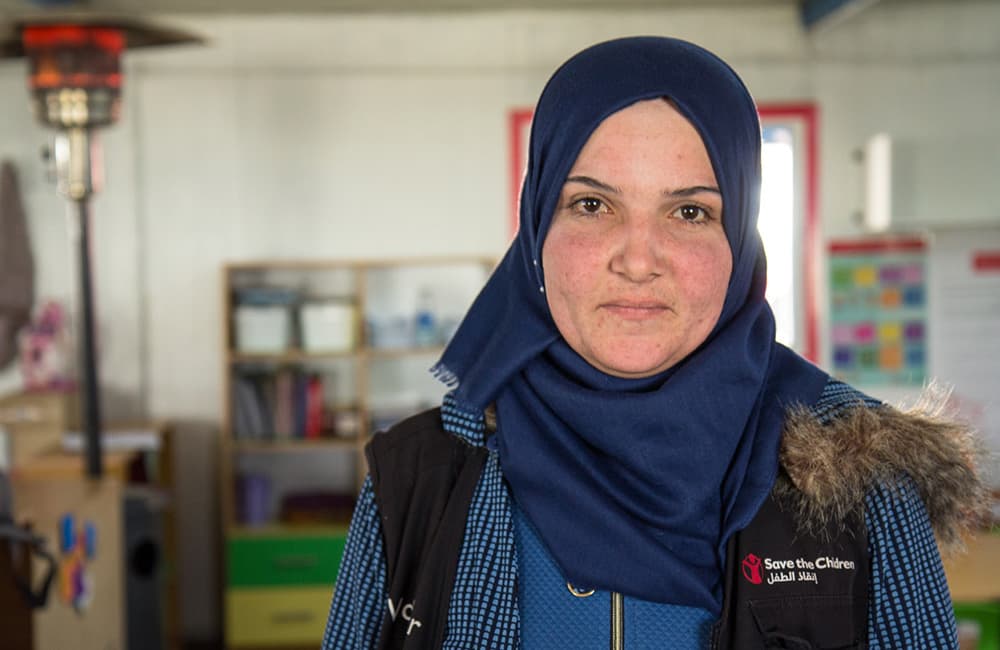Flight to the relative safety of no-man’s land
After a terrible journey, they eventually reached the Rukban refugee camp near the border with Jordan. They arrived with no possessions, sometime after midnight. Seeing how her daughters suffered on the journey to Rukban, she wondered whether they would have all been better off if they had died.
Despite this, Sarah was relieved that they had made it to the no-man’s land between the Syrian border and the Jordanian border, where they would be safe from bombs.
There were 2,000 other refugees when they arrived at Rukban. By the time she left, 5 months later, there were nearly 60,000 refugees in the area. The conditions were very primitive. The area was flat and arid. There was a small valley that everyone used to wash and as a toilet. There was no shelter whatsoever and all water had to be trucked in.
The day-to-day struggle of life in the refugee camp
On a usual day, Sarah would wake early and fetch water with her neighbour. If she left early, there were few other people and the lines were short. She would then do the family’s washing. Later in the day, she would fetch food - there was only enough for one meal a day. Disease was widespread in the camp. Sarah was very worried that her children would be infected. Many people died.
About once a week, cars and buses would arrive at the camp and the refugees knew that those selected to leave the camp would be notified that day. All the refugees would go to the assembly area to hear if their name was called out.
As months passed while she waited for her name to be called, Sarah became tired from the day to day struggle and from living with so much uncertainty. She worried about her parents. They were both sick and their medication was running out.
Violence in the camp increased. People started regularly fighting and throwing rocks. If a rock hit your tent it left a large hole in the canvas.

Sarah, mother of Dina and Zeina, now in the relative safety of a Jordanian refugee camp.
Zeina’s dream of returning to school
Sarah’s father planned for them to stay in Rukban and then return to Homs. However, Zeina, Sarah’s oldest daughter, told her grandfather that she wanted to go to school. Before she stopped going to school in Homs, Zeina had been a good student and enjoyed studying. Sarah remembers her father crying when his granddaughter told him how much she wanted to go back to school. He changed his mind and agreed that they would seek to cross the border so his granddaughter could return to school.
Five months after arriving at Rukban, Sarah attended one of the regular assembly meetings where the names of those who would be allowed to cross into Jordan were called out. Her name was read out, but not the name of her parents. She began to cry knowing that she could not leave her elderly parents. One of the soldiers nearby who she knew asked her why she was crying. She told him she could not leave without her parents. He reassured her that they would all be allowed to cross. She immediately returned to her tent, relayed the news to her parents and children and they headed for the buses to immediately cross the border.
Hardships and homework
Life was still hard for Sarah and her daughters in the Jordanian refugee camp, but they were now much safer. Best of all her daughters could return to school.
At first, Zeina was disappointed about school, as she was required to repeat grade 4. However, she rapidly progressed and soon she was in grade 6 and top of her class. Now, when Sarah sees her two daughters doing their homework after a day at school, she is so happy she forgets all of their hardships and the things that have happened to them.
Sarah does not expect to return to Syria anytime soon. She still does not believe it would be safe for her and her daughters.
This is just one story of 415 million children living in conflict zones
Right now 415 million children worldwide are living in a conflict zone. It's hell for all children, but it’s especially hard on girls. Girls are at far higher risk of sexual and other forms of gender-based violence. As the war in Syria approaches 9 long years, Save the Children is demanding for those involved to stop the war on children. To stop the deliberate targeting of children; to stop schools from being turned into places of war and pain so girls like Zeina can fulfil their right to an education.